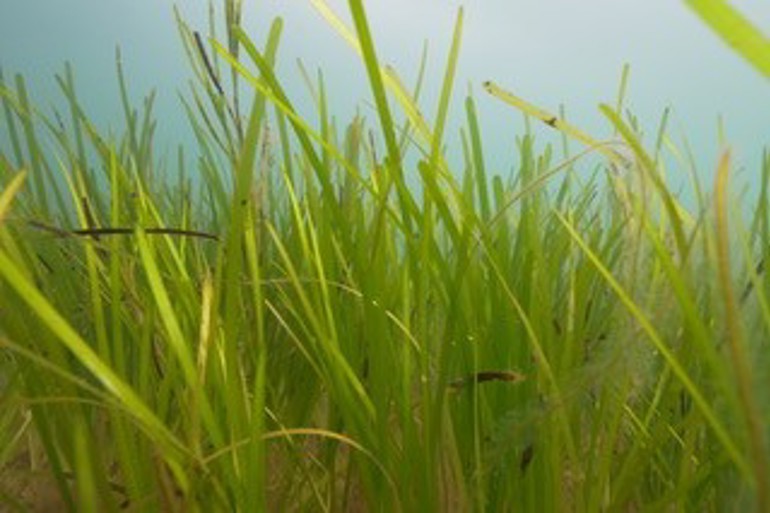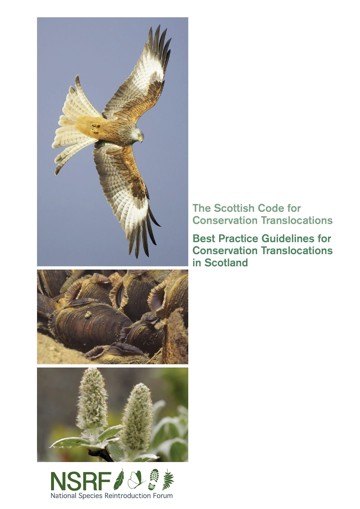
Conservation Genetics
-
- Our work explores the importance of genetics for restoration programmes
- We investigate the impacts of inbreeding and outbreeding depression on rare and threatened plant populations
- We study plant biology and dynamics using state-of-the-art molecular methods
Our conservation genetics research focuses on rare, threatened and important plant species. We use a combination of genetic and ecological methods to help answer key ecological questions and inform conservation and management decisions.
The aim of our work is to gain better insights into species' breeding systems, population dynamics and dispersal abilities in the wider landscape. This is to ensure that conservation efforts are able to support self-sustaining, viable populations in the wild. RBGE has a wealth of experience working on rare plants and hosts significant ex-situ collections from across the world. Using genetic information we inform on the quality of these collections (e.g. quantify genetic diversity) and help maximise the success of conservation translocations (e.g. avoid inbreeding and outbreeding depression). Our work helps identify contemporary and future risks for plant species which are faced with environmental threats such as major habitat loss and climate change. We work with species ranging from tiny herbs to montane willows and even seagrasses - vital for carbon sequestration and biodiversity.
Cicerbita alpina - Alpine-blue sowthistle
The alpine-blue sowthistle, Cicerbita alpina, exists in only four very small natural populations in the UK, all of which are in Scotland in the Cairngorms National Park. Despite producing flowers and seeds, no recruitment has ever been observed at these sites.
Material has been collected from each of these remnant populations, examined genetically, grown at RBGE, and replanted at new translocation sites to reduce the species’ extinction risk. By maximising the genetic diversity at translocation sites we aim to create populations that will produce viable seed, and be able to adapt to future environmental change.
Our work is conducted in close partnership with NatureScot to help deliver the Cairngorms Nature Action Plan.
For more information contact Dr Aline Finger

Seagrass
Seagrass meadows play a significant global role in supporting food security, mitigating climate change and supporting biodiversity. They can store up to 35 times as much of the greenhouse gas as the same area of rainforest – and they can hold onto it for millennia. Human activity has reduced these once-abundant meadows to scattered beds in coastal waters, covering only around 10 percent of their original extent around the UK. Working with partners including Project Seagrass, WWF, NatureScot, Seawilding, St Abbs Marine Station, Edinburgh University, SRUC and community volunteers, we support the scaling-up of seagrass meadow restoration in Scotland and the wider UK.
The long-term success of any conservation project involving reintroduction or translocation of organisms is dependent upon selecting the most suitable sources from which to breed individuals for restoration. The introduced organisms must be optimally adapted to the conditions of the site, but also genetically diverse to give the best chance of adapting to future environmental changes such as climate change or emerging diseases. We conducted extensive genetic analysis of over 50 different seagrass beds around the British Isles and Channel Islands, to determine the species’ genetic composition and diversity, and the degree to which populations are genetically connected (for instance through ocean currents).
We showed that seagrass populations around the British Isles are genetically grouped into three main clusters (on the East, South and West Coasts), each one potentially adapted to the local environment. Within each cluster, genetic exchange (through pollen or seed dispersal) occurs frequently and across long distances. Thus, we showed that seed for restoration projects can be chosen from a wide geographic range, as populations are genetically connected. Additionally, success is most likely if seed is chosen from the most climatically-matched of the three main clusters: for example, for restoration in the Firth of Forth this is the East Coast cluster, which stretches from the Scottish Borders to Shetland. As this is such a wide-ranging population, it can provide sufficient genetic diversity to enable the new meadows to adapt to future environmental challenges. The best results will likely be achieved by collecting seed from a mix of East Coast populations.
However, some populations identified were small, consisting of fewer than ten genetically-distinct individuals, tending to spread only clonally. These would be much less suitable as single source populations for restoration projects. The data generated will not only allow identification of the best sources of seed for restoration at any given site, but also shed light on biological processes (such as mechanisms of reproduction) in these little-studied but increasingly vital communities.
For more information contact Dr Aline Finger. Image courtesy Jake Davies/Project Seagrass.

Saxifraga hirculus - Marsh Saxifrage
The Marsh Saxifrage, Saxifraga hirculus, is found at only a few sites in the uplands of Scotland and England, and one site in Northern Ireland. Since the 19th century, it has become extinct in many lowland parts of Scotland.
Estimates of population size based on observations suggest that well over 300,000 plants persist. In collaboration with NatureScot, RBGE is conducting genetic analyses to determine the amount of clonal reproduction in populations. This will give a much better understanding of the actual number of remaining unique plants, and help develop more targeted management strategies.
For more information contact Dr Aline Finger

Woodsia ilvensis - Oblong woodsia
The Oblong woodsia (Woodsia ilvensis) suffered serious declines in the Victorian era due to over-collection, and today is known as the rarest fern in Britain. It remains in less than 100 clumps in just six populations, three of which are in Scotland. The fern is classified as endangered in the Red Data Book for Great Britain, 2005, and listed on both the Scottish Biodiversity List and the UK Biodiversity Action Plan.
RBGE is exploring whether genetic problems (such as inbreeding or low genetic diversity) may explain the lack of reproduction in wild populations as part of a PhD study (Nadia Russell). We have build up a significant ex-situ collection representing all wild UK populations, in addition to Norwegian material for current research and future reintroductions.
For more information contact Dr Aline Finger

Bluebells
Extinction of the UK's native bluebell (Hyacinthoides non-scripta) via hybridisation with garden-escaped, non-native "Spanish" bluebells (H. hispanica) is a current conservation concern. However, despite this conservation issue attracting a large amount of public attention, the perceived threat is based on little hard evidence. One major problem in evaluating the extent of the threat is uncertainty over species limits in this group.
A collaborative project between RBGE and the Natural History Museum, London aims to investigate this potential threat to the UK's native bluebells.
The project aims to:
- Clarify species limits between Hyacinthoides taxa in Britain and establish their relationships to taxa found elsewhere;
- Assess the extent of hybridisation between native and non-native bluebells in UK;
- Develop a molecular test to distinguish H. non-scripta from other Hyacinthoides taxa;
- Determine which morphological characters are most reliable for taxon identification.
For more information contact Dr Deborah Kohn

Malus sylvestris - European wild apple
Wild apple ("crab apple", Malus sylvestris) is one of Scotland’s rarest native trees. This is an understudied species which is difficult to differentiate reliably from domesticated apple (M. domestica; syn M. pumila) and hybrids between the two, using morphology due a continuum of traits. We are using molecular markers (microsatellites) to investigate wild crab apple and the extent to which it hybridises with domesticated apple in Scotland. Our recently published paper shows that about 30% of Malus sylvestris trees in Northern Britain are actually hybrids. However, the proportion of introgressed trees varies considerably between geographic regions, with areas such as the Southern Highlands (Loch Lomond and the Trossachs) and Dumfries and Galloway having the highest frequency (> 75%) of pure wild apple trees. These populations should be of priority conservation concern in order to safeguard the genetic integrity and future of M. sylvestris as a species in Northern Britain.
For more information contact Dr Markus Ruhsam

Montane Willows
The woolly willow (Salix lanata) is a low-growing shrub found in extreme mountain environments. It is a highly endangered species in the UK, growing in just 13 locations (all of which are in Scotland), and is part of a threatened scrub community restricted by high levels of grazing. In 2009, four of the 13 remaining sites were selected for intensive conservation action. At Corrie Fee National Nature Reserve for example, one of the best montane flora sites in Britain, RBGE’s horticultural expertise was used to propagate over 1100 young montane willows from seed, which were planted out amongst the existing plants. This program aims to create a thriving community, of benefit to many other species, which will in turn increase the biodiversity value of this National Nature Reserve. Extensive work has also been done on Salix lapponum and S. myrsinifolia.
Project partners: NTS, NatureScot, Woolly willow steering group (now Montane Scrub Action Group)

Monitoring genetic diversity
To support Scotland’s response to global biodiversity targets such as the 2020 Aichi Biodiversity Targets and the 2030 Global Biodiversity Framework, we synthesise information on the genetic diversity of multiple species and translate this into assessments of their genetic health via a Genetic Scorecard.


This work was first undertaken to enable genetic diversity reporting for wild species in response to the Convention on Biological Diversity (CBD) Aichi Target 13.
We are now updating and enhancing this methodology and undertaking a new round of reporting to support the implementation of the CBD Global Biodiversity Target 4 (“to maintain and restore the genetic diversity within and between populations of native, wild and domesticated species...”).
The original methodology for the Genetic Scorecard can be found online here and downloaded as a pdf here.
The supplementary report which shows the Genetic Scorecard in action via its application to 27 species in Scotland can be found online here and downloaded as a pdf here.
For more information contact Prof Pete Hollingsworth.
This work is supported by SEFARI, and is jointly led by the Royal Botanic Garden Edinburgh, the University of Edinburgh, and NatureScot. The original methodology was developed in collaboration with researchers from 17 other organisations including the Moredun Research Institute, James Hutton Institute, University of Sheffield, Centre for Ecology and Hydrology, Scotland’s Rural College, Biomathematics and Statistics Scotland, Science and Advice for Scottish Agriculture, Royal Botanic Gardens, Kew, Bumblebee Conservation Trust, Botanical Society of Britain and Ireland, University of Salford, University of the Highlands and Islands, University of Glasgow, and University of Aberdeen.
-
Our partners
